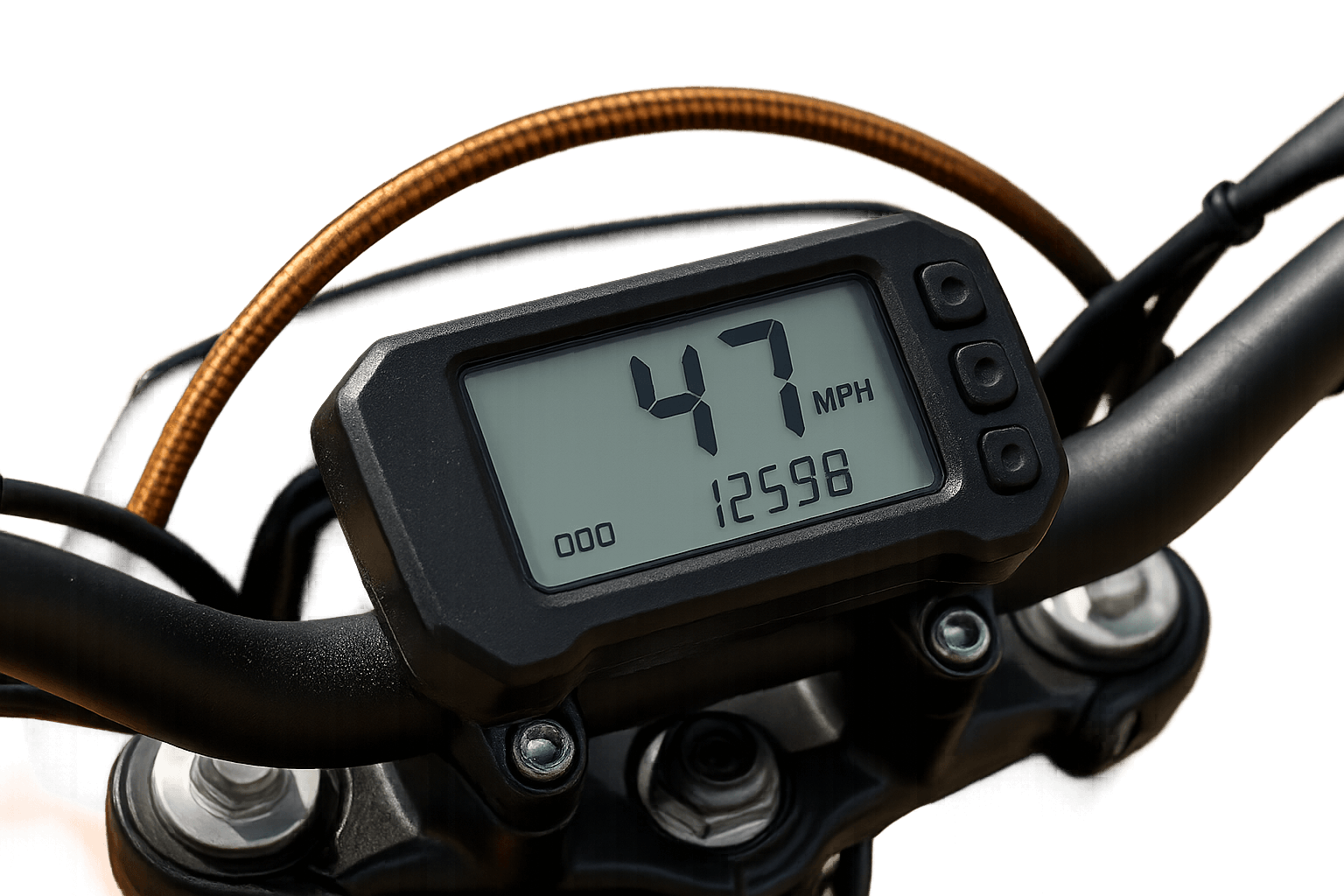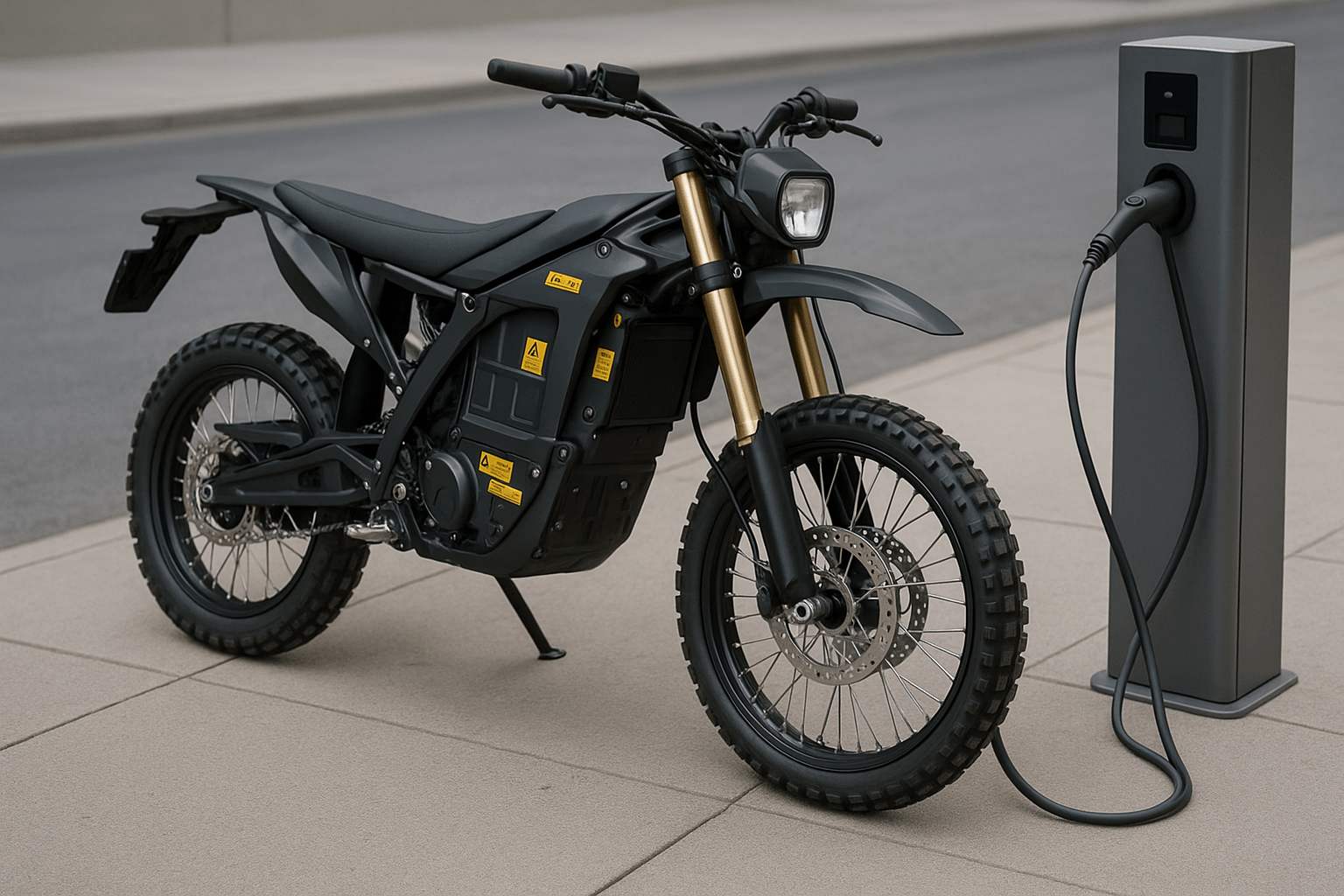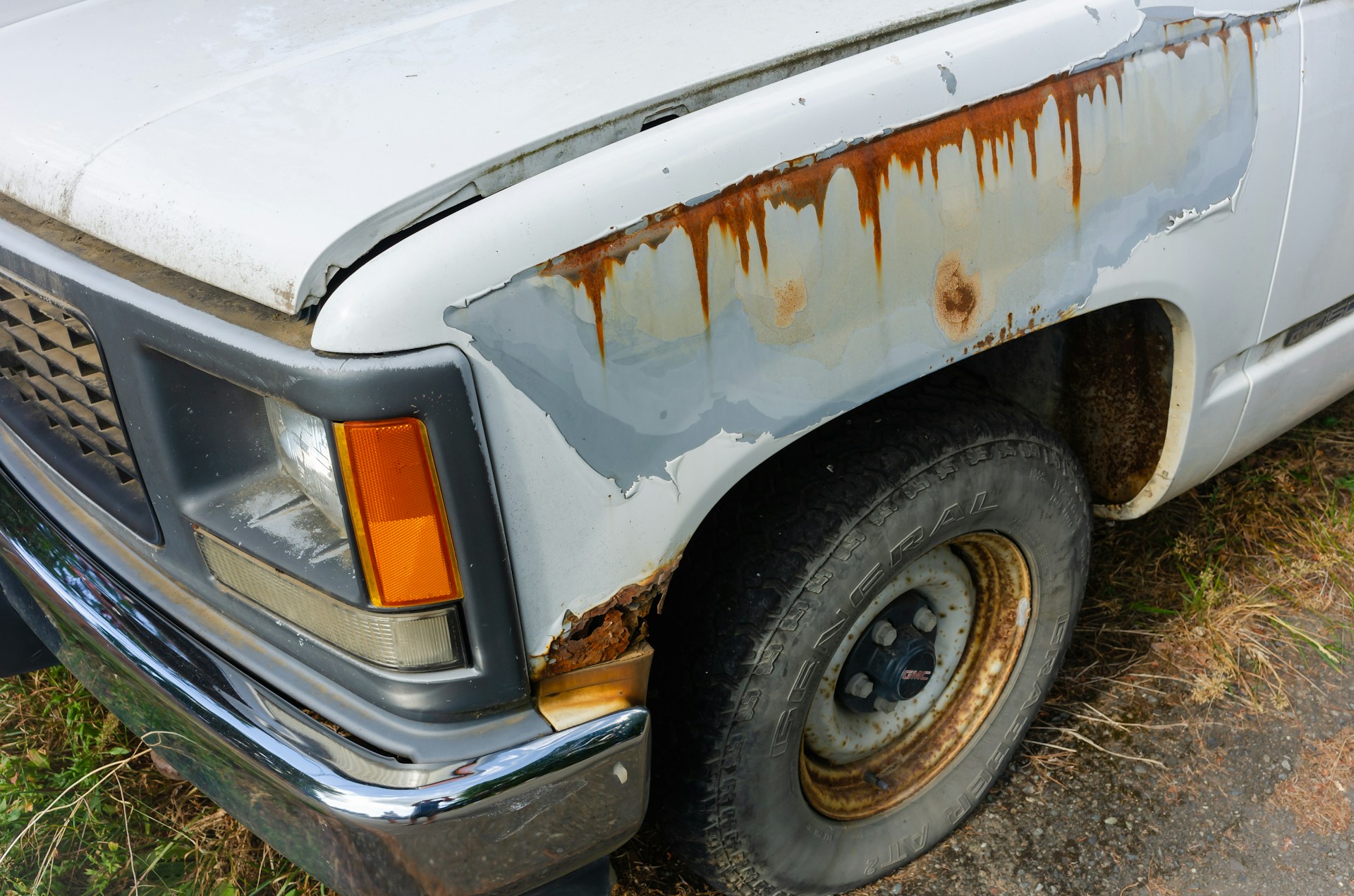Contents
Intending to make your dirt bike street legal? The procedure requires specific modifications and legal documentation. Every dirt bike modified as a street-legal motorcycle must have specific elements. These are lighting systems, mirrors, a horn, DOT-approved tires, and valid registration. The conversion process transforms off-road vehicles into street-legal motocross bikes. Grasping how to make a dirt bike street legal implies following complex federal and state requirements. Riders working with damaged bikes may need to get a salvage title cleared.
Why Street-Legal Dirt Bikes Are Gaining Popularity
Converting bikes is a popular trend. Many riders value the ability to ride both off-road trails and city streets with a single bike.
- Cost-effective alternative to buying separate off-road and street motorcycles.
- Enhanced mobility for accessing remote trails via public routes without trailer transport.
- Increased resale value compared to purely off-road bikes.
- A practical transportation option for daily commuting.
- Access to dual sport motorcycle benefits without premium pricing.
- Reduced storage requirements for multiple bike ownership.
According to a managing editor at Motorcycle Industry Weekly, over the past three years, street-legal dirt bike conversions have increased by 34%.

What Modifications Are Required to Make a Dirt Bike Street Legal?
The goal of converting your dirt bike is to meet safety and legal standards.
Lighting Equipment

Street-legal bikes need comprehensive lighting systems: headlights, tail lights, brake lights, and turn signals. All lights must be DOT-certified. They should be properly wired to the dirt bike’s charging system (LED lights are preferred). Upgrading the lighting system is one of the most important steps for street safety. Poor visibility creates safety concerns for dirt bike riders and other drivers.
Safety Gear and Visibility
Proper visibility equipment ensures safety on public roads and meets legal requirements for street use.
- Working mirror (minimum one, but two mirrors strongly recommended).
- Bar end mirrors for better visibility angles and reduced vibration.
- Reflective tape on wheels, frame, and handlebars.
- Bright colored safety gear, including high-visibility riding jackets (Recommended by state motorcycle safety programs in over 30 states).
- DOT-approved helmet meeting current safety standards.
- Mirror positioning that provides a clear view of traffic behind the dirt bike (Over 60% of failed inspections noted poor or blocked rear visibility).
- Electric horn with adequate volume for highway use.
- A license plate holder properly mounted and visible.
Pro Tip from SCA Experts: “The first thing riders forget? A functional horn. It’s cheap, takes 10 minutes to install, and it’s the first thing inspectors test.”
Engine & Exhaust Requirements
Engine modifications ensure compliance with emission standards and noise regulations required for street legal operation.
| Component | Requirement | Notes | Typical Cost |
| Exhaust System | EPA/CARB approved | Must meet noise limits under 95dB | $200-600 |
| Engine Temperature | Cooling system adequate | For sustained highway speed operation | $150-400 |
| Emissions | State-compliant catalytic converter | May require professional installation | $300-800 |
| Sound Level | Under 80-95 dB, depending on jurisdiction | Measured at specific RPM ranges | Testing fee $50-100 |
Speedometer & Odometer

Street-legal dirt bikes must have functioning speedometer and odometer systems to comply with vehicle regulations and ensure safe operation at highway speeds. These instruments help bikers monitor speed limits and track mileage for maintenance purposes. Digital displays are acceptable and often more reliable than analog gauges for off-road applications. The speedometer must accurately display speeds up to at least 85 mph, while the odometer should track total mileage for registration documentation.
Tires, Wheels & Brakes
Proper tire selection and brake systems are crucial for safe street riding and legal compliance. The transition from off-road to street use requires changes in tire compounds and brake system configuration.
| Component | Street Requirement | Off-Road Difference |
| Front Wheel | DOT approved, highway speed rated | Knobby, softer compound for traction |
| Rear Wheel | DOT approved, street tread pattern | Aggressive off-road pattern for loose surfaces |
| Front Brake Lever | Required, adjustable reach | Must activate brake light switch |
| Rear Brake Pedal | Required, functional operation | Connected to the rear light activation |
| Brake Light Switch | Must activate reliably | Not required for off-road vehicles |
| Brake Pads | Street compound for consistent stopping | Off-road pads may fade on pavement |
Paperwork You’ll Need to Legalize Your Dirt Bike
Documentation is essential for legal street riding and varies significantly between states. Many states require extensive paperwork before issuing registration for converted dirt bikes, with some jurisdictions having more stringent requirements than others. Some bikers explore salvage dirt bikes as cost-effective starting points, though these require additional documentation and verification processes. The paperwork process can be complex and time-consuming. Once approved, you’ll receive your dirt bike license plate for legal road operation.
- Certificate of Origin or existing title documentation with a clear ownership history.
- Bill of sale with VIN decoder verification and proper notarization.
- Emissions compliance certificate (if required by state environmental regulations).
- Safety inspection certificate from a certified motorcycle inspection facility.
- Insurance documentation that meets state minimum liability requirements.
- Registration application with applicable fees and tax payments.
- Driver’s license verification and motorcycle endorsement documentation.
- Salvage title clearance (if applicable) with damage assessment documentation.
- Photographs of completed modifications for inspection verification.
- Professional installation certificates for major safety components.
- License plate application and mounting verification.
Research shows that 67% of riders underestimate the paperwork requirements for dirt bike legal conversion, often discovering additional documentation needs during the registration process that can delay completion by several weeks.
How Much Does It Cost to Make a Dirt Bike Street Legal?
Total conversion costs typically range from $800 to $2,500. The sum depends on the current dirt bike’s condition, required modifications, and local regulatory requirements that vary by jurisdiction.
DIY vs. Pro Conversion
The choice between self-conversion and professional services affects both the cost and the complexity of making your dirt motorcycle street legal. Budget-conscious bikers often research the cheapest city to buy a vehicle when starting their conversion project, as the initial bike cost significantly impacts total investment. DIY conversions require substantial mechanical knowledge and access to proper tools, while professional conversions offer expertise and warranty protection but at higher costs.
| Aspect | DIY Conversion | Professional Conversion |
| Cost | $800-1,500 total investment | $1,500-2,500 total investment |
| Time Required | 20-40 hours spread over weeks | 1-2 weeks turnaround time |
| Warranty | None provided | 6-12 months of typical coverage |
| Expertise Needed | Moderate to high mechanical skills | Not required from the owner |
| Safety Assurance | Self-responsibility for compliance | Professional guarantee and liability |
| Tool Requirements | Extensive electrical and mechanical tools | Professional shop equipment used |
| Parts Sourcing | Individual responsibility | Shop relationships and bulk pricing |
Legal Risks of Riding an Unconverted Dirt Bike on Public Roads
Operating unmodified dirt bikes on streets creates significant legal and safety hazards for riders and other drivers. Law enforcement agencies have increased enforcement efforts targeting illegal dirt bikes.
- Heavy fines ranging from $200 to $2,000, depending on local laws and repeat offenses.
- Possible vehicle impoundment and storage fees are accumulating daily until resolution.
- Insurance claims may be denied for illegal vehicle operation, leaving bikers financially liable.
- Increased liability for accidents involving other vehicles, pedestrians, or property damage.
- Criminal charges in some jurisdictions for repeat offenses or reckless operation.
- Safety hazard to pedestrians and other motorcycles due to inadequate tail lighting and mirrors.
- Potential license suspension for serious violations or multiple citations.
- Court costs and legal fees if challenging citations or defending against charges.
How to Pass a Motorcycle Inspection After Your Conversion
A successful inspection requires thorough preparation and attention to detail. Ensure all lights function properly. This concerns turn signals, tail light activation, and headlight beam patterns. Verify mirrors provide adequate visibility without excessive vibration. Confirm the horn operates at required volume levels. Validate that wheels meet DOT requirements with adequate tread depth. Schedule inspection with certified mechanics familiar with converted dirt bikes and state-specific requirements.
For reconditioned vehicle projects, additional documentation may be required. You may need to prove your parts’ professional installation. Inspection failures can delay registration and require costly reinspection fees.
Can You Make an Electric Dirt Bike Street Legal?

Electric dirt bikes can be converted for street use. Nonetheless, compared to traditional internal combustion engines, they face different regulatory requirements.
- Adequate charging system for all lights, accessories, and emergency backup power.
- Battery life is sufficient for sustained operation without performance degradation.
- High voltage safety systems and proper wiring with appropriate circuit protection.
- Direct current to alternating current conversion, if needed, for specific accessories.
- Regenerative braking systems for improved safety and extended battery range.
- Added components for emergency lighting backup in case of main battery failure.
- Thermal management systems for battery temperature control during extended use.
- Emergency shut-off procedures are clearly marked and accessible to first responders.
Summary
Converting your dirt bike to street-legal status requires deep modifications. Make sure the bike’s lighting, mirrors, horn, DOT-approved tires, and proper documentation are functional. The cost is from $800 to $2,500. The procedure may be challenging and time-consuming. However, successful conversion provides versatile transportation. Proper planning, attention to detail, and realizing local regulations are essential for successful dirt bike street legal conversion projects.
Industry data indicates that properly converted street-legal dirt bikes retain 15% higher resale value than off-road-only models.
FAQ
Can a Kid Ride a Dirt Bike on the Road?
Kids can ride street-legal dirt bikes on public roads only under certain conditions. They should have a proper driver’s license, insurance, and adult supervision.
What States Require Dirt Bike Insurance?
Most states require insurance for any street-legal motorcycle operation. Coverage requirements vary. Nevertheless, liability insurance is typically legally required for all riders.
What Is the Difference Between Red and Green Stickers on a Dirt Bike?
Sticker colors indicate different usage restrictions and emission compliance levels.
Red Stickers:
– Seasonal riding restrictions in many areas
– Limited to specific months for trail access
– Often indicates older emission standards
– May restrict certain public land access
Green Stickers:
– Year-round riding privileges on most trails
– Meets current emission standards
– Broader access to public off-road areas
– Generally preferred for dual-purpose bikes
Can I Register My Dirt Bike in Another State to Bypass Restrictions?
Registering dirt bikes in different states to bypass restrictions is generally illegal. It may result in registration cancellation and legal penalties.
Will Converting My Dirt Bike Make It Eligible for Motorcycle Plates?
Successful conversion typically qualifies dirt bikes for motorcycle registration. However, specific requirements vary by state and local jurisdiction.
Must pass safety inspection requirements.
Complete all required modifications and documentation.
Meet emission standards where applicable.
Obtain proper insurance coverage.
Pay registration fees and taxes.






